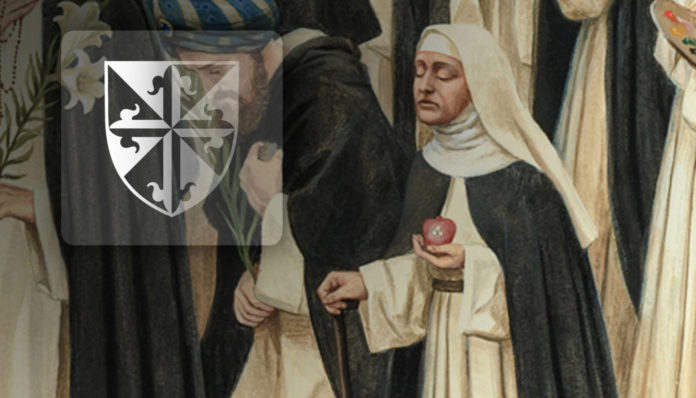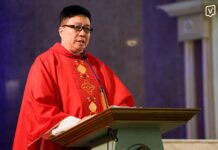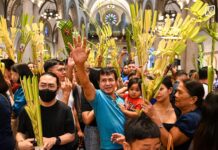AMID trouble and uncertainty, Catholics should draw inspiration from St. Margaret of Castello who led a faithful and compassionate life despite her physical disabilities.
St. Margaret, who was crippled, blind, and hunchbacked and had been abandoned by her parents, served the Lord and cared for those in need.
During the thanksgiving Mass for the canonization of St. Margaret, Fr. Mhandy Malijan, O.P. said Catholics can find hope in her life, especially during this pandemic.
“Makikita natin ang hope or pag-asa sa Santang ito kung nakakaranas tayo ng maraming [pagsubok] sa panahon ng pandemya. [M]arami tayong nakikita na walang trabaho, may sakit, namamatay at iba’t ibang pangyayari sa buhay,” Malijan, who is parish priest of Santo Domingo Church, said in his homily last Sept. 19.
“Sa kabila ng kanyang karanasan sa buhay… hindi galit at poot ang kanyang nasa puso kundi punong-puno ng pagmamahal sa Diyos at paglilingkod sa kapwa,” he said.
Master of the Order of Preachers Fr. Gerard Francisco Timoner III, O.P. described St. Margaret as a “wounded healer” and likened her to the poor widow in the parable. Despite her disabilities, she enabled other people to become better, he said.
“Blessed Margaret was blind but she saw the goodness in people; she was born with structural leg length discrepancy, but she walked with grace because she knew that she was walking humbly in God’s presence,” he said.
On April 24, Pope Francis declared the blind 14th-century Italian lay Dominican a saint through a process called “equipollent canonization.”
“Equipollent” or “equivalent” canonization, which is different from the usual canonization process, occurs when the requirement for two miracles attributed to the candidate’s intercession is waived.
This means St. Margaret was proclaimed a saint by a decree without a formal ceremony and without the need for a miracle to have been performed through her intercession.
Candidates for equipollent canonization must meet three criteria. They must be the subject of a long-running cult and have a solid and long-lasting reputation for virtue. They must also have a long history of miracles.
In 1609, Pope Paul V declared Margaret “Blessed” by equivalent beatification.
Last Sept. 16 to 18, Filipino Dominicans held triduum prayers in commemoration of St. Margaret’s canonization at the Santo Domingo Church in Quezon City.
Modern Margarets
Leo Ocampo, a faculty member from the UST Institute of Religion and a professed lay Dominican since 2019, pointed to “modern Margarets” in UST who exemplify the saint through their different roles in the university.
“In UST, we have all kinds of lay Dominicans. May mga administrators and teachers like myself, doctors in the hospital, and students. Mayroon din kaming janitors. And before the pandemic, we had few security guards who expressed their interest to join us,” Ocampo told the Varsitarian.
A modern Margaret is “an ordinary Christian —flaws, disabilities and all —who tries one’s best to love and serve God in other people,” he said.
Timoner said Dominican causes for sainthood continue to be promoted because it is a “visible sign of vitality and relevance” in the order.
“The canonization of Margaret of Castello represents for all of us a renewed confirmation that Dominican life, in all its fullness and richness, is truly a path to holiness,” he said.
Born in 1287 to an Italian family of lesser nobility, St. Margaret was born blind and with a severe curvature in her spine.
With no hope of curing her defects, Margaret’s parents abandoned her in 1303 at a shrine in Città di Castello where she was later discovered by local townsfolk who took pity upon her and started to take care of her.
She was known to visit the abandoned—the poor, the prisoners, the children—at a time when unwanted babies were discarded by their parents and handed over to convents and churches.
She started a small school for children where she taught them the Catholic faith as a way of gratitude to the people who raised her.
St. Margaret died on April 13, 1320 at the age of 33. She is venerated as the patroness of the blind, persons with disabilities and the pro-life movement around the world. Ma. Alena O. Castillo and Sophia T. Sadang














